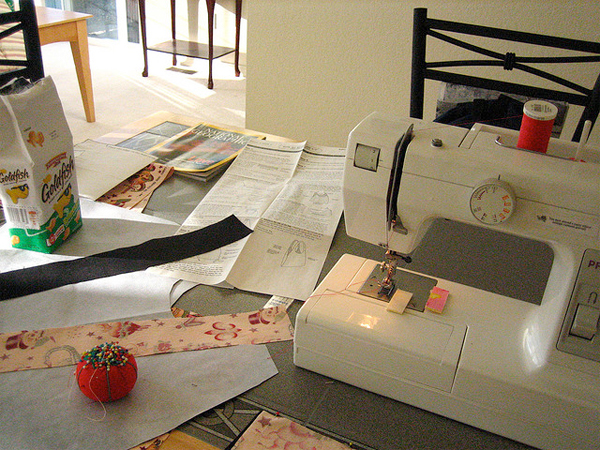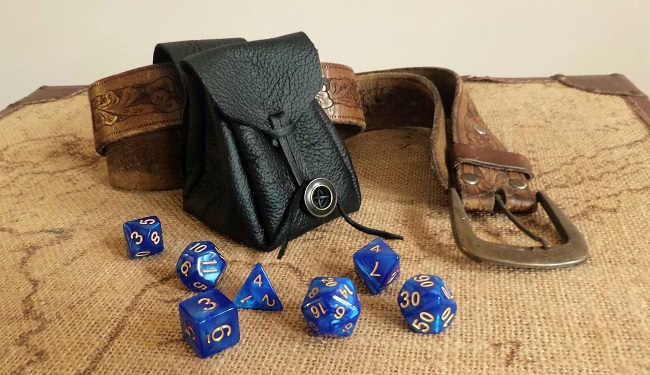Sewing Tips from Trails Crafts
Sewing can be intimidating, but few basic tips can make that apprehension disappear. In this post I will describe a few topics that will not only help the appearance of a sewing project, but increase the durability and will help make things easier. Some of these things are topics I have wrote about on my own blog, trailscrafts.com, and some are new.
1. Know Your Sewing Machine. All sewing machines are different. Whether you purchased your machine new or used, it's important to have a manual. Usually you can find it online if one did not come with the machine. Knowing the functions of the machine will help through any project. Also, it's very important to keep your machine properly oiled. The manual for the machine will say which parts need to be oiled and how to get to them. It's also good to have extra parts of the wearable items. For instance, the bobbin case. Over time the screw that adjusts the tension on the bobbin thread will move. Some sewing machine manufacturers tell you that you'll never have to adjust the bobbin tension, and that the bobbin case comes adjusted from the factory, but anyone who has had to adjust the tiny screw several times in a row and still not have the tension quite right, knows how frustrating it can be to fix a bobbin case that is not adjusted correctly.
2. Use An Iron. The iron is almost as important as the sewing machine. From pressing seams to making a tidy hem, the iron will make any project go smoother. This handy tool will help against seams becoming bunched up by pressing seams open, or to the side for a dart. It also helps with making smooth and evenly made hems.
3. Back Stitch & Tie Knots. To make any seam more durable it's important to back stitch and tie knots. Both of these things help keep seams from unraveling. Back stitching is a very simple step. Once a seam is completed, push the button or pull the lever on the sewing machine to make a few backwards stitches. This sews over the previously sewn stitches. When cutting the thread from the machine, leave enough room to make a knot at the end of the seam. If the ends of the thread are opposite sides of the fabric, use a seam ripper to pull the end on the right side of the fabric, to the wrong side. That way when you make your knot, it will be on the wrong side of the fabric. Doing at least one of these two things will greatly improve the sturdiness of an project.
4. Always Take Your Time While Cutting. Unless you have extra fabric on hand, if you make a big enough mistake while cutting, you could have to start over with a different fabric. Always pay attention how you place your pattern pieces of pinning, especially if the fabric is directional. If you are using a commercial pattern, read the instructions to see what the seam allowance is before cutting. Most of the big pattern companies make their patterns with the standard 5/8" seam allowance, but always read first before assuming. Also, on purchased patterns there will be a straight line with an arrow on either end on each pattern piece. This marks the grainline. This line on the pattern should line up with the grain of the fabric. The grainline is parallel to the selvage. Pinning something along the grain would be parallel to the selvage, against the grain would be perpendicular to the selvage. The selvage is the edge of the cloth that prevents unraveling.
5. Utilize Different Needles. Different types of fabric should be sewn with different sizes of needles. There are stretch needles, universal needles, embroidery needles, quilting needles, etc. Large gauge needles are made for thicker fabrics, and small gauge needles are made for lighter weight fabrics. The lower the number, the thinner and more flexible the needle is. The thicker fabric should use the heavier more rigid needles, and the thinner fabric should use the smaller more flexible needles. If you use a heavy needle on a thin fabric, it will rip holes in the fabric, and if you use a thin needle on a heavy fabric, the needle will break. Needles wear out easily, so make sure to change them often. Different types of fabric are better suited for different projects. Commercial patterns have a list of suggested fabrics on the package. It's a good idea to pick one of their suggestions. The wrong type of fabric can really have an adverse effect on your project.
These basic sewing tips can help anyone interested in sewing, whether they are just starting to learn, or are more experienced.



